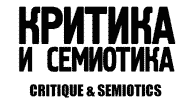Search
| # | Search | Downloads | ||||
|---|---|---|---|---|---|---|
| 1 | The article presents the results obtained at the intersection of three research tasks: the development of visualizations for teaching physics in schools; the implementation of the Phenomenon-Based Learning (PhBL) method under various educational systems; and the construction of a creative educational environment for the training of future physics teachers. The relatively coincidental convergence of the authors’ research interests ensures the originality of the results obtained. The relevance of visual semiotics for solving these tasks is defined not so much by the development of the visualizations themselves, but by one of the PhBL key principles —contextuality—and by constructivism as its conceptual foundation, which opens the way for the application of “semiotic diagnostics” to assess the limits of the PhBL method itself. The article details the circumstances and tools involved in developing three visualizations: (1) light refraction; (2) the interaction of forces; and (3) the solar system model. The effectiveness of the visualizations is assessed in correspondence with the PhBL method and the students’ understanding of physical phenomena, such as light refraction, object motion, Newton’s laws, and planetary movements. This integration has allowed for an expanded context in students’ understanding of physical phenomena by combining the idealizations inherent in physics, the abstractions of the corresponding mathematical tools, and the interpretation of everyday situations. The study was conducted in four schools, where a total of 96 tenth-grade students participated in tasks based on visual representations of physical phenomena. The effectiveness of these methods was assessed through an organized observation of the students’ learning activities. The results of the study showed that 85% of the students reported a significant improvement in their understanding of complex physical phenomena due to the developed visualizations. The study is limited by the relatively small sample size and its focus on schools within a specific region, adhering to a particular educational system. Nevertheless, the findings from this pilot study indicate the effectiveness of the integration of visualizations and the PhBL method. The significance of the results lies in demonstrating the potential of visual semiotics for integrating teaching methods. Keywords: visual semiotics, interpretation of physical phenomena, educational activities, schooling, integration of teaching methods | 943 | ||||










